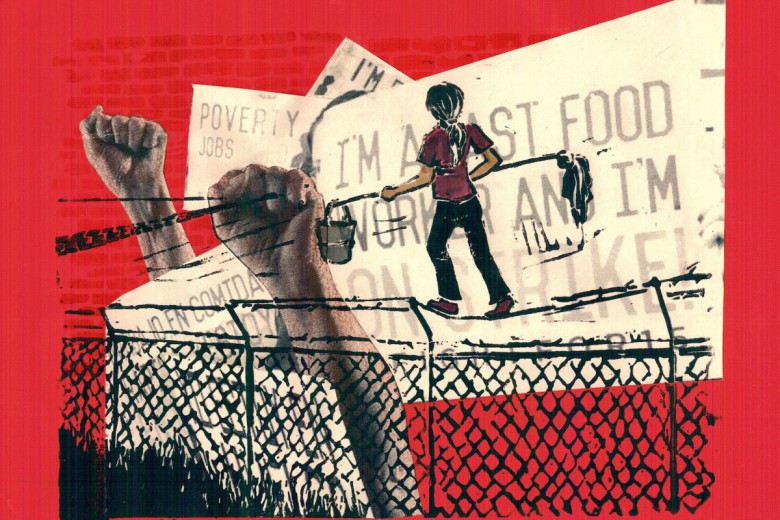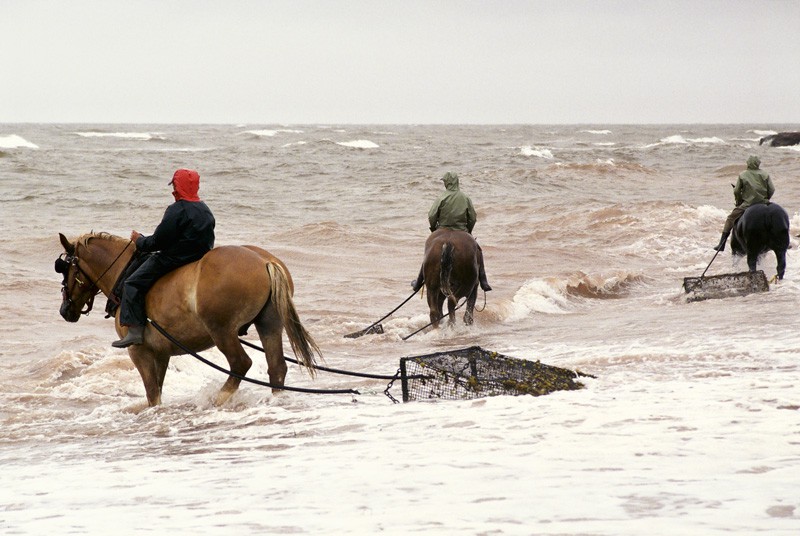
It’s become a bit of a routine. As I slide into my seat on the late afternoon flight from Moncton to Toronto, I scan my seatmate. A sturdy-looking guy wearing work boots and a company ball cap, he seems like he takes this flight a lot. He has none of the clutter that I drag around on my travels; like any commuter managing the redundancy of the drill, his style is efficient. He is a Maritime worker on his way to the oil patch.
Flights to and from the Maritimes – which I have been taking with some regularity since I found myself “goin’ down the road” 12 years ago – are always colourful. There are few business travellers. In their place are families with rambunctious kids excited to be flying; tourists enthralled by their first contact with locals or carrying bulky boxes labelled “live lobster”; and, the largest category, people who have moved away in search of something more returning home for a visit.
When I fly home to P.E.I., I always feel like part of a pilgrimage. Many flights east converge on Toronto; arriving at my gate at Pearson International Airport, I’m greeted with a wave of Maritime accents and the chaos of travellers who haven’t been disciplined out of displaying excitement and curiosity. With some trepidation about revisiting old relationships and younger versions of myself, I scan the crowd for familiar faces. In a way, I arrive home before even boarding the plane.
A well-planned crisis
Maritime outmigrants are a varied bunch. Some, like myself, have relocated rather indefinitely to places with more robust labour markets, but many who work in extractive industries – oil and gas, mining, hydro – are long-distance commuters. There are different tempos to this arrangement, but the basic rhythm is the same: periods of intensive work on site and time off in one’s home community.
In the case of my seatmate: two weeks on, one week off. Like most oil workers I’ve encountered on my travels, he is not eager to be leaving home yet again. He describes to me his attempts to defy the distance that comes with relocation, to never fully put down roots in the camps of northern Alberta. Showing me his watch, he explains that he leaves it on Atlantic time, allowing a little piece of himself to not make the trip.
“I hate it,” he tells me. “But it’s a job.”

As in most of rural Canada, jobs are hard to come by out here. According to the latest numbers from Statistics Canada, Prince Edward Island has the highest provincial unemployment rate at 12 per cent. In certain parts of the Maritimes, such as in northern New Brunswick, unemployment hovers around 20 per cent. The numbers for youth are even grimmer. What’s more, official statistics don’t account for large parts of the jobless (or nearly jobless) population: discouraged folks who have stopped looking for work altogether, involuntary part-time workers, and others who are under- or barely employed. When we account for these people, a picture emerges in which over a quarter of the workforce is lacking secure work in parts of the region. It’s nothing short of a crisis.
But this crisis is neither surprising nor new. We often think of rural decline as part of the natural course of economic history, but the state of things on the East Coast has, in a sense, been thoroughly planned. To understand the current crisis, we need to look to Parliament Hill as much as to Bay Street: the modernization plans of the 1970s that consolidated farmland, industrialized fisheries, and ushered people into the service industry; the state’s myopic mismanagement of the cod fishery, which produced the largest mass layoff in Canadian history; and the last 40 years of taking apart the welfare state. There is a long history of dismantling local economies here: economies that are too labour intensive, too seasonal, too unproductive, too rural. All the while, the solution to a broken system has been to take more things apart. And throughout the many ill-fated attempts to start a stubborn economic engine, chronic unemployment has remained a constant.
A round of reforms
Adding salt to the unemployment wound is the most recent round of reforms to Canada’s employment insurance (EI) program. These changes – pushed through as part of the Conservative government’s omnibus budget bill that came into effect in January – include a host of measures that limit access to the program. The most discussed changes have been the specifications around “suitable employment” and “reasonable job search,” most notably the requirement that job hunters search for, and accept, work up to an hour’s commute away that pays as little as 70 per cent of their previous wages.
But this is just the beginning. Measures have also been put in place to penalize repeat users. The 65-year-old board of referees system for evaluating appeals has been dismantled, removing employer and labour representatives from the process. The appeals process has also shifted from in-person meetings to a largely computerized process. This not only makes it harder for people to tell their stories but also poses serious barriers for appellants with limited literacy or internet access.
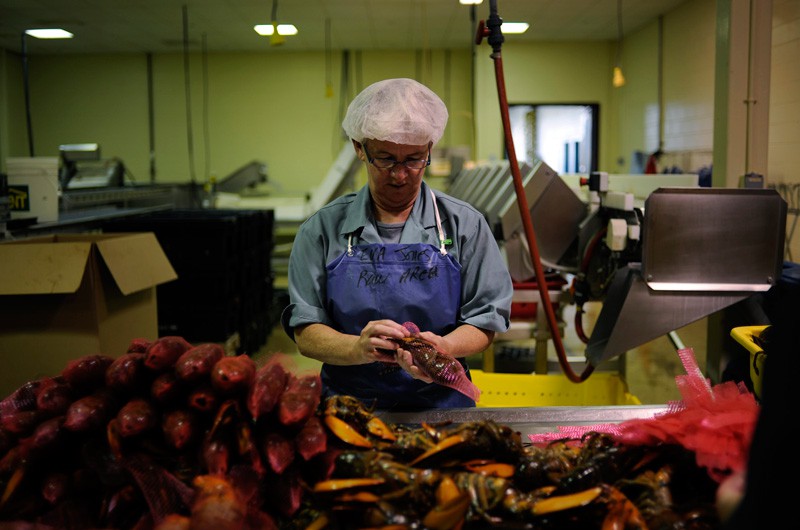
Of particular concern to those working in seasonal economies is the threat of EI disqualification for workers who leave “permanent” (i.e. year-round) employment for seasonal work. This stipulation will affect claimants now required to take off-season work at 70 per cent of their previous wages – if those jobs happen to be permanent, and if workers choose to return to their better-paid seasonal work when the time comes, they may be actively disqualifying themselves from accessing EI benefits should they be laid off in the future. The effect could be to subtly force people into a position of trading in their careers for something far more precarious.
“When you think of a unionized work environment,” Lori MacKay of the P.E.I. Coalition for Fair EI tells me, “you’ve got seasonal workers who are getting health benefits, pension plans, all the rights of a collective agreement. And if they take a job at Wendy’s [in the off-season], these changes make it tough for them to go back to their permanent work with the benefits.” While the government equates “permanent” work with year-round work, many people consider seasonal work to be their permanent work, either because these jobs are more secure or because they’re more meaningful. Sometimes both. In many cases, these are simply the jobs that people know how to do and want to keep doing.
Putting a paradox to work
For a long time now, the Conservative government has been telling us a fictional story about labour shortages. Jason Kenney, as the newly minted Minister of Employment and Social Development, framed the problem as a “paradox of too many people without jobs in an economy that has too many jobs without people.” Perhaps he hadn’t seen last winter’s Statistics Canada figures indicating that for every job vacancy in New Brunswick there were more than 13 people looking for work. There is no paradox. There are no jobs. And for an increasing number of Maritimers, these EI cuts mean they will be required to leave the region in order to put food on the table.
This story of the labour paradox has been put to work as an ideological lubricant for a whole host of destructive policy changes, including not only the EI cuts but also the expansion of the temporary foreign worker program. The result is a dizzying seasonal circulation of temporary foreign workers into the Maritimes and of Maritimers into Alberta – all under the guise of local labour shortages.
“I don’t think it’s mysterious at all,” says labour economist Jim Stanford speaking to the strange geography of the arrangement. “Bringing in temporary foreign workers to a province with chronic excess labour supply proves that the whole program is about workers’ attitudes and labour cost, not about labour shortages.” Requiring people to look further afield for work “is a blatantly punitive measure symbolic of the
Conservatives’ tough love approach,” says Stanford.
Tough love is right. Last February, federal employees peppered the country, showing up unannounced at the doors of EI recipients, government forms and interview questions in hand, hunting down the supposedly fraudulent claimants living in our midst. As has recently been revealed by a Service Canada whistleblower – who sacrificed her job in the process – the federal government is operating under a quota system that requires federal bureaucrats to “recoup” almost half a million dollars in EI payments from recipients each year – payments that are fully funded by workers and employers since the federal government ceased its support for EI in 1990.
“It will crush this community”
Amid all the commotion, it has quietly come to light that in northernmost Cape Breton, 500 kilometres north of Halifax, a pair of small fishing communities have become subjects of a more targeted social experiment. Last fall, 180 people in the villages of Bay St. Lawrence and St. Margaret Village – combined population around 300 – received letters advising them that their benefits were being cut, pending the findings of a Service Canada investigation into claims made between 2007 and 2010. Although benefits were reinstated until the close of the investigation in response to the communities’ protest, more than 80 people in the region have since been ordered to “repay” tens of thousands of dollars from years past. Their wrongdoing? Working for family members.
“These are family-owned fishing boats – they’re gonna hire their family!” says Clayton MacKinnon, manager of Victoria Co-op Fisheries in Bay St. Lawrence. In the Maritimes, like in many rural areas, employing family members is common. Fishing families in these communities – and many like them across the Gulf of St. Lawrence – have been able to collect unemployment benefits seasonally on the basis of familial employment for years. But, as these communities have recently learned, Canadian jurisprudence has changed its interpretation of the arm’s-length rule that regulates access to unemployment benefits in familial employment relationships. Without warning, this new interpretation has been mailed to these communities in the form of repayment orders – some as high as $90,000.
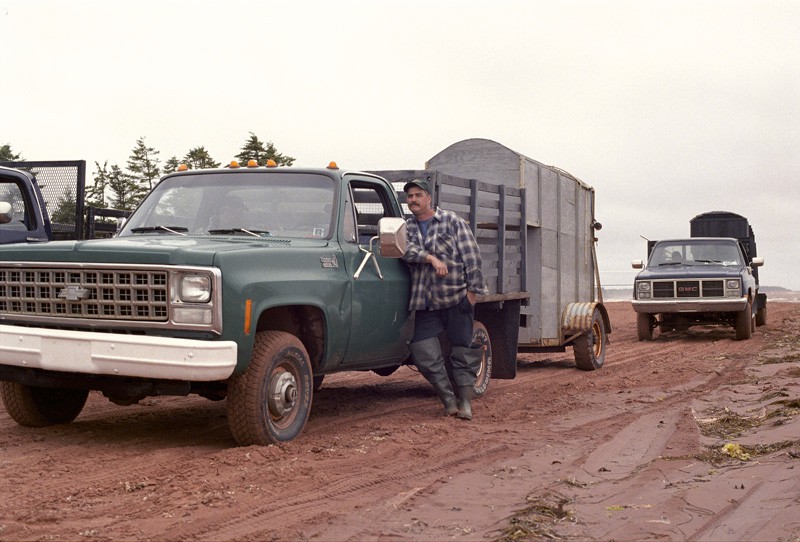
“Receiving those letters was, I think, the most fearful point of each and every person’s life,” MacKinnon tells me. “They want roughly $2 million paid back from this community, between 80-some people. It will crush this community.” Almost everyone who filed an appeal has since had it rejected. But the communities seem prepared to keep fighting the decision – their very existence depends on it.
Add to the cuts and intimidation tactics a good dose of reactionary right-wing media – chastising jobless workers for being overly choosy (remember Finance Minister Jim Flaherty’s declaration that “there is no bad job”); blaming rural people for being unresourceful (see Globe and Mail columnist Margaret Wente counselling Islanders from her Yorkville condo on the virtues of relocation); and denouncing the culture of defeatism and laziness that is supposedly responsible for holding the East back from prosperity – and you have yourself a solid culture of shame and fear around this vestige of material security.
“Young Islanders are leaving in droves, and they have been for a long time,” Lori MacKay tells me. “It starts with a family where the father goes out West and works for six weeks and comes back for a couple, and they’ll do that for a number of years. And then, finally, they’ll just pick up and leave, or the family breaks up. And you know, it’s changing the culture in the rural communities.”
Against the exodus!
Whether they’ve been regulated or intimidated out of the system, people who need protection against joblessness can no longer access it. In the wake of the most recent changes, fewer than one in four unemployed people are receiving regular benefits, the lowest level since 1944. Federal statistics also tell an interesting geographical story. In the first four months under the new regulations, P.E.I. and New Brunswick were leading the way in rising EI disqualifications – that is, the number of people kicked out of the system – at 18.3 per cent and 15.9 per cent compared to this time last year. Alberta, meanwhile, was bringing up the rear with a decrease in disqualification of 15.2 per cent.
Communities around the Gulf of St. Lawrence are abuzz with speculation about the targeted nature of these changes. Just one week after the implementation of the changes last January, 4,000 Madelinots – one third of the population of the small islands in the Gulf, Les Îles de la Madeleine – took to the streets against the reforms. The theme of their protest was “Non à l’exode,” against the exodus. Across the region, the preservation of rural communities is inseparable from the well-being of seasonal industries. For the families of long-distance commuters and many other unemployed and seasonal workers, this might be the final push in a long line of policy changes that have made it increasingly impossible to eke out a living in this part of the world.
Cape Breton MP Mark Eyking speculates that the situation in northern Cape Breton is just a test run for a broader crackdown across Atlantic Canada meant, in part, to drive people to distant labour markets. “People here are well aware of the history of the Highland clearances,” says Eyking, referring to the rounds of bloody enclosures that swept rural Scotland in the 18th and 19th centuries, forcing people off the land and into the mills.
Geographies of desperation
Capitalism has an old habit of re-organizing territory and people to meet its needs. There is nothing natural about this reorganization. Through violence, coercion, deprivation, and false promises, industry and sympathetic government policy produce geographies of desperation. These unequal geographical arrangements make it much easier to compel people – sentient beings with roots, communities, emotions – to act like commodified labour. Threatened by the stick of deprivation, people are ushered down the road; lives are contorted to fit the needs of the market.
In the dark world of labour market planning, much energy is invested in figuring out how to foster this flexibility. The Conservative government has commissioned studies aimed at understanding how to overcome Canada’s so-called mobility problem and herd people out of areas with high unemployment into other regions. These studies have sought connections between the provision of government supports like EI and people’s willingness to move. The results seem to be largely inconclusive. If anything, for people who do feel compelled to move, unemployment benefits might provide the financial resources to allow them to make the trip. The latest study unearthed by media, carried out by a private firm on the order of the Ministry of Human Resources (now Employment and Social Development), ran focus groups across Atlantic Canada and rural Quebec to determine “to what extent EI eligibility and generosity affect geographic labour mobility.” When confronted by the media, then Human Resources minister Diane Finley denied any knowledge of the study. Perhaps that’s our cue to be concerned.
Labour market planners term the tendency for people to want to live in their communities a “labour market rigidity.” That is, being rooted and reluctant to move disrupts the fantasy of a frictionless flow of labour power. The remedy is a cocktail of incentives and threats meant to help us collectively overcome our “mobility barriers.” According to this free market fanaticism, policies that allow us to stay – like access to a (barely) livable income when we are unemployed – are bad; measures that make this harder – like limiting this access – are good.
Standing up to the sticks
One of the things I’ve always loved about the Maritimes is the feeling that we’re teetering on the edge of becoming modern, but never quite make the leap. When I was a kid, Islanders used to say – with some level of pride – that P.E.I. was 10 years behind the rest of the world. In a place where many fought the arrival of a bridge to the mainland, there’s an old wariness that hangs in the air: of speed, competition, “progress.” There’s a way of relating to productivity here that’s worth thinking about. As my dad likes to say, people work to live; they don’t live to work.
But this ideal of a secure livelihood rooted in place and community poses a serious threat to the market. It’s a system of valuation fundamentally at odds with the circulation of labour required to keep the oil flowing, and it highlights the importance of practising and supporting different systems of value. For those who want to stay put, this means fighting for an EI system that meets the needs of the communities who use it, but it also highlights a bigger question about having control over our lives.
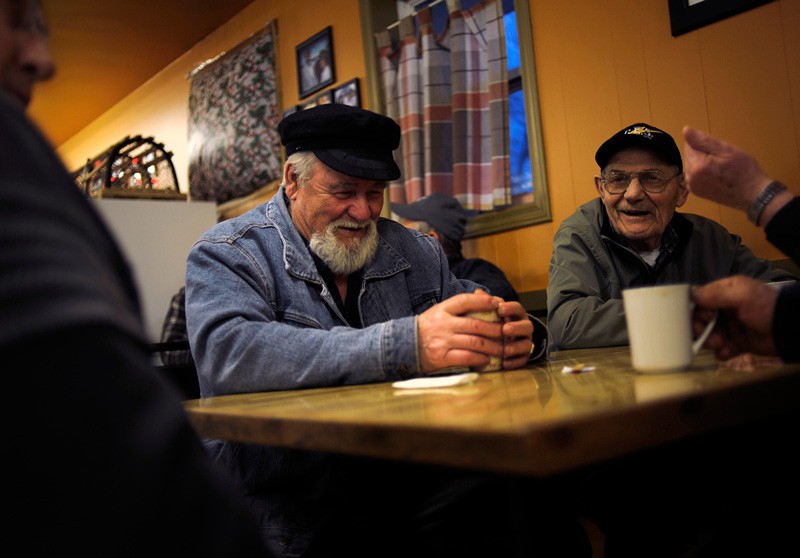
Last spring, lobster fishers across the Maritimes tied up their boats for almost a week, unwilling to fish for prices from processors that failed to even cover their costs of operation. These fishers are owner-operators, and in a world of work as alienating as ours, they hold on to this shred of autonomy tightly. The strike invigorated conversations about the benefits of community-owned processing plants as a way for fishers and their families to take more control over their lives, their industry, and their communities.
Far from a pipe dream, this tradition has a rich history in this part of the world. In response to poverty and merchant control of the industry in the 1930s, communities around the Maritimes organized co-operative canneries and credit unions. Most of the co-ops have since shuttered, but in some rural communities, they still form the economic backbone. Now, as then, this form of collective control is one small way of standing up to the sticks – low lobster prices, unemployment, EI clawbacks – driving people down the road.
Funnelling workers West
In an attempt at pacification, Stephen Harper came to P.E.I. in May 2013 to tell anxious Maritimers that “there is nothing, absolutely nothing in our changes that targets seasonal industries or seasonal workers, or requires anybody to leave their region to get a job.” But this is exactly what the recent round of EI reforms is forcing people to do: pack up and head West where they’re told they’ll find work. The tarsands industry – and, soon, the Ring of Fire, Plan Nord, and so on – depends on access to mobile labour pools and, in turn, on government policy to help create them.
In addition to funnelling workers West, local disinvestment has also helped roll out the red carpet for the Energy East pipeline, the proposed 4,500-kilometre pipeline that would transport crude from Alberta to the country’s largest refinery, and a promised deep-water marine terminal in Saint John, N.B. Having met resistance on all other coasts, the oil industry may have finally found its way to global markets. New levels of insecurity in a region with an already low sense of entitlement have helped condition the political climate in favour of almost any investment, paving a welcoming road to the Atlantic. In the Maritimes, the promise of 2,000 temporary jobs and a few hundred permanent jobs might be all it takes. People are scared, out of options, and clinging to the hope of earning a livelihood closer to home. These are the geographies of desperation: the uneven deprivation and promises that compel people to contort their lives to meet the demands of the market, whether it means leaving home or risking the environmental ruin of everything on which your livelihood depends.
In the context of Canada’s deepening geography of inequality, programs like EI go a long way toward helping people sustain themselves in the place of their choosing. “We’re not giving up,” MacKinnon assures me. But there’s a powerful system that tells us, again and again, that staying put is lazy, defeatist, and valueless. To stay put, people need support. And in the short term, that means scrapping the recent EI changes.


